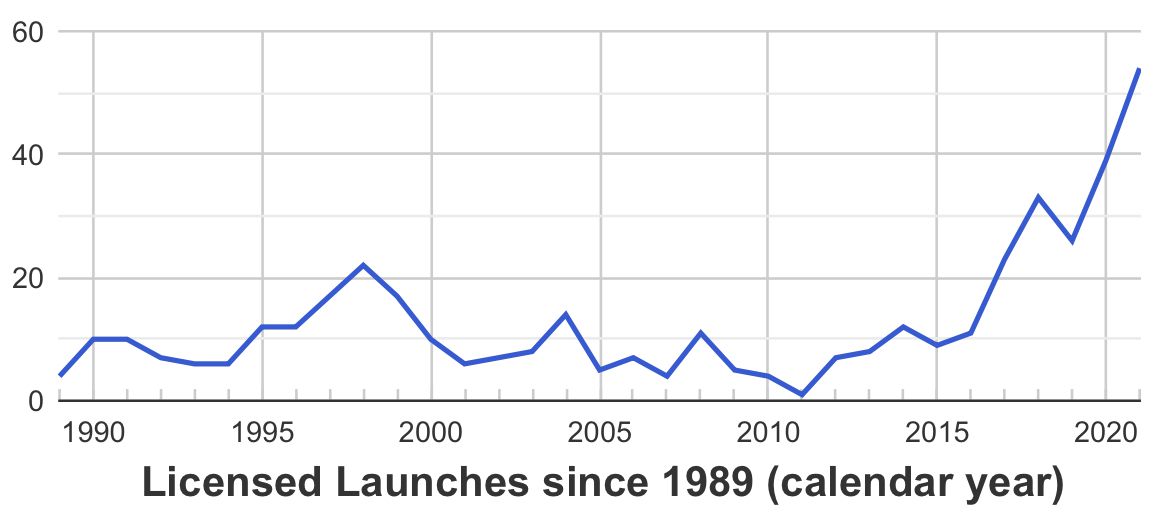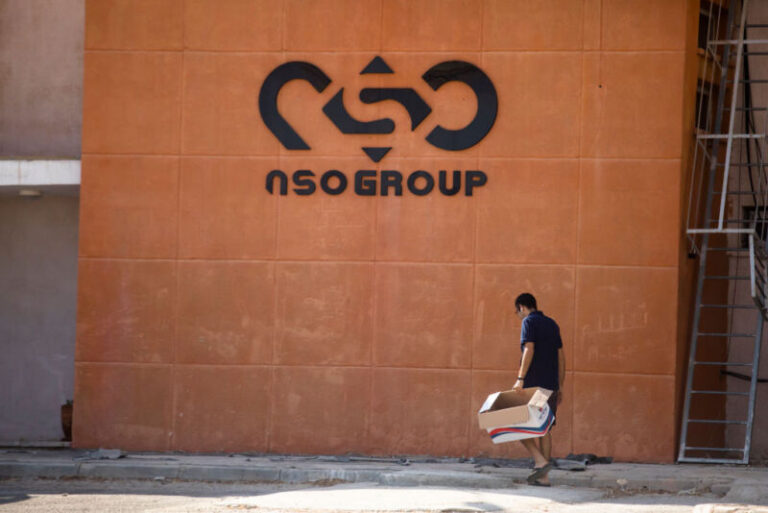You can typically blame an airline flight delay on a handful of usual suspects, like bad weather, mechanical issues, and traffic on the tarmac. But thanks to the rise of the commercial space industry, there’s now a surprising new source of air travel disruption: rocket launches.
In recent weeks, flights in and out of Florida have seen a sharp increase in delays. Palm Beach International Airport logged more than 100 delays or cancellations on April 15 alone. (Some of these can be attributed to a surge in private and charter flights.) Things are even worse at Jacksonville International Airport, where there were nearly 9,000 flight delays in March. Last week, federal regulators met to discuss these disruptions, which reflect many of the ongoing challenges facing the aviation industry, including storms, the rising cost of jet fuel, the Covid-19 pandemic, and a shortage of airline workers. But in Florida, a growing number of space launches — particularly those in the Cape Canaveral area — is also making flight schedules more complicated.
“They close significant airspace on the east coast before and during and after a launch. That traffic has to go somewhere,” John Tiliacos, the executive vice president of finance and procurement at Tampa International Airport, told Recode. “It’s like putting 10 pounds of potatoes in a five-pound bag, so you’re further congesting an already constrained airspace on the west coast of Florida.”
While right now these delays are concentrated in Florida, this problem could get a lot worse, especially as the number of spaceflights increases and as new launch facilities, or spaceports, open in other parts of the country. The situation is also a sign that the arrival of the second space age could have an unexpected and even extremely inconvenient impact on everyday life.
The spaceship problem is relatively straightforward: Air traffic controllers currently have to ground or reroute flights during launches. In order to break through the atmosphere and reach outer space, rockets must first travel through airspace that’s monitored by the Federal Aviation Administration (FAA), which oversees air traffic control centers and flight navigation throughout the country. While these rockets typically only spend a few minutes in this airspace, they can create debris, like spent pieces of rocket hardware, either because they’re designed to shed their payloads in several stages or because the mission has failed. Reusable boosters used by some spacecraft, like SpaceX’s Falcon 9, reenter this airspace, too.
To make sure that planes aren’t hit by this debris, the FAA typically stops flights from traveling within a rectangle-shaped block of sky that can stretch from 40 to several hundred miles long, depending on the type of launch. Typically, there’s about two weeks of advance notice before each launch, and during that time, air traffic controllers can develop alternative arrangements for the flights scheduled on that day. While a launch is taking place, aviation officials track the vehicle’s entry into space and then wait for word from experts who analyze the trajectory of debris created by the launch in real time. If there is debris, air traffic controllers stand by until it falls back to Earth, which typically takes 30 to 50 minutes. Once that happens, regular flights can return to their normal flight paths.
A single space launch can disrupt hundreds of flights. For example, a SpaceX Falcon Heavy launch in 2018 — the same flight that infamously shot Elon Musk’s Tesla Roadster into space — impacted 563 flights, created 4,645 total minutes of delays, and forced planes to fly an extra 34,841 nautical miles, according to data from the FAA. That extra mileage adds up quickly, especially when you consider the extra fuel and carbon emissions involved. Researchers from Embry-Riddle Aeronautical University in Daytona Beach, Florida, estimate that a single space launch could cost airlines as much as $200,000 in extra fuel by 2027, and as much as $300,000 in extra fuel in the following decade.
The FAA insists it’s making improvements. Last year, the agency started using a new tool, the Space Data Integrator, that more directly shares data about spacecraft during launches and allows the agency to reopen airspace more quickly. The FAA also says it has successfully reduced the duration of launch-related airspace closures from about four to just over two hours. In some cases, the agency has been able to reduce that time to just 30 minutes.
“An end goal of the FAA efforts is to reduce delays, route deviations, fuel burn, and emissions by commercial airlines and other National Airspace System users as the frequency of commercial space operations increase,” the agency said in a statement.

And the frequency of launches is picking up. There were 54 licensed space launches overseen by the FAA last year, but the agency thinks that number could grow in 2022 thanks to the rise in space tourism, growing demand for internet satellites, and upcoming space exploration missions. These launches could also become more common in other parts of the country as new spaceports, which are often built on or near existing airports, ramp up operations. The FAA has already licensed more than a dozen different spaceport locations in the United States, including Spaceport America in New Mexico, where Virgin Galactic launched its first flight last summer, as well as the Colorado Air and Space Port, a space transportation facility located just six miles from the Denver International Airport.
The FAA’s role in the rise of the commercial space industry is becoming increasingly complex. Beyond certifying and licensing launches, the FAA’s responsibilities also include studying the environmental impact of space travel and overseeing new spaceports. The agency will eventually have to monitor space passenger safety, too. This is on top of all the other new types of flying vehicles the FAA will also have to keep its eyes on, like drones, flying air taxis, supersonic jets, and even, possibly, space-faring balloons.
“Where things get contested is more on: How do all of these different types of vehicles fit in the system that the FAA is in charge of?” Ian Petchenik, who directs communications for the aircraft flight-tracking service Flightradar24, told Recode. “Things are going to get much more complicated, and having a way to figure out who has priority, how much space they need, and what the safety margins are, I think, is a much bigger long-term question.”
While we’re still in the early days of the commercial space industry, some have already expressed concern that the agency isn’t headed in the right direction. The Air Line Pilots Association warned back in 2019 that the FAA’s approach could become a “prohibitively expensive method of supporting space operations,” and has urged the agency to continue to cut down on the length of airspace shutdowns during space launches. At least one member of Congress, Rep. Peter DeFazio, is already worried that the FAA is prioritizing commercial spaceflight launches over traditional air travel, which serves significantly more people.
Beyond air flight delays, the burgeoning space travel business has already influenced everything from the reality television we can watch and the types of jobs we can get to international politics and — because of the industry’s potentially enormous carbon footprint — the threat of climate change. Now it looks as though the commercial space industry could also influence the timing of your next trip to Disney World.





